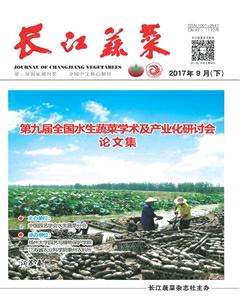A Conversation Analysis of Talk Show
Kang+Yanyan
【Abstract】This paper aims to find out how a successful TV talk show goes like from the perspective of turn-taking. It probes into the effective communication strategies by using turn-taking, adjacency pairs, and repair.
【Key words】turn-taking; adjacency pairs; repair
I. Introduction
Brown and Yule (1983) argues that discourse analysts treat his data as the record (text) of a dynamic process in which language was used as an instrument of communication in a context by a speaker/writer to express meanings and achieve intentions. This paper aims to find out how the hostess and the interviewee in the TV talk show communicated lively from the perspective of conversation analysis including turn-taking, adjacency pairs, and repair.
II. An Analysis of Turn-Taking in a Talk Show
Michael Mccarthy (1991) claims that turn taking investigates how participants organize themselves to take turns at talk. It suggests at least one side speaking each time. There are some transitional relevant places where one can get the turn, however, participants usually interrupt or overlap each other to get the turn or make back-channel showing his attention. All these are marked in the transcription of the talk show. It is interesting to see that at the beginning turn taking goes smoothly will little overlaps and interruption. With the continuation of the talk and participants more involvement, it is frequently equipped with either verbal interruptions, overlaps, back-channels, pauses and change of intonations or nonverbal behaviors such as nodding, body gestures and smiling making this talk show go in an active way. For example,
M: …If you like, if you, er, if you touch one childs life, may be that child is going to touch others. (Gestures) And you know what…
H: //Absolutely //The trip affects on that.
M: //Absolutely
H: (Nodding) Right. Now I know that (gestures) there are a lot of students here in the studio audience who have been one of your programs (gestures) and have been touched by PTPI. Can I see, Can you …just raise your hands and wanna see who
M: =Oh, thats great.
H: you are?(fast speed, raising hand)
Here, “er”, a language device showing that Mary is meditating her talk. The gestures she employs help her meaning and intention understood by others. Followed by the hostess “Absolutely”, a back-channel showing her attention and “The trip affects on that” an overlap helping Mary finished her sentence. This again is overlapped by Marys “Absolutely” confirming her words. Then her nodding also confirms the information delivered. Her raising tone and fast speed aim at raising audiences attention and informing new information to Mary, audiences turn coming participation. All these verbal and non-verbal devices, in addition to the normal turn taking contribute to a lively talk show and communication.endprint
III. An Analysis of Adjacency pairs in a Talk Show
Adjacency pairs are the mutually dependent utterances made by two speakers. The second is a response of the first. They play an importance role in daily communication in maintaining social relations, getting information. Here, the hostess greeting like H: H: welcome to...So, tell me about the trip this time... and Marys greeting like Well, were going to visit several schools and... The above greeting-greeting is an adjacency pair marking a good beginning of the talk show.
IV. An Analysis of Repair in a Talk Show
Repair can be made either by oneself or others for better communication. It is explicit in this talk show especially when pause or certain language devices or body languages appear. Take one part for example:
M: He thought that, (Mm) after seeing things during WWII, he thought that (0.2) an organization needed to be established to bring out, er (0.1) to (Body language) to be a tool to bring out the best in the people instead of what he had seen. So he er (0.2) began to bring PTPI program
The language device “Mm” enables Mary to add necessary information to her talk serving as self-repair. “er (0.1) to (Body language)” is employed to make a correct expression. Hence, all these repairs in this talk show make the communication in a more effective way so that more information can be attained.
V. Conclusion
This paper analyzes the transcript of a talk show from the perspective of conversation analysis including turn-taking, adjacency pairs, and repair. It suggests that in this lively talk show, participants get fully involved in the conversation by using take turns by frequently using both verbal interruptions, overlaps, back-channels, pauses and change of intonations and nonverbal behaviors, adjacency pairs to commence the show and repair to get more information. All the above-mentioned device contribute to a great extent the effective communication of the talk show.
References:
[1]Brown,G&Yule G.(1983).Discourse Analysis[M].Cambridge, London:CUP.endprint

